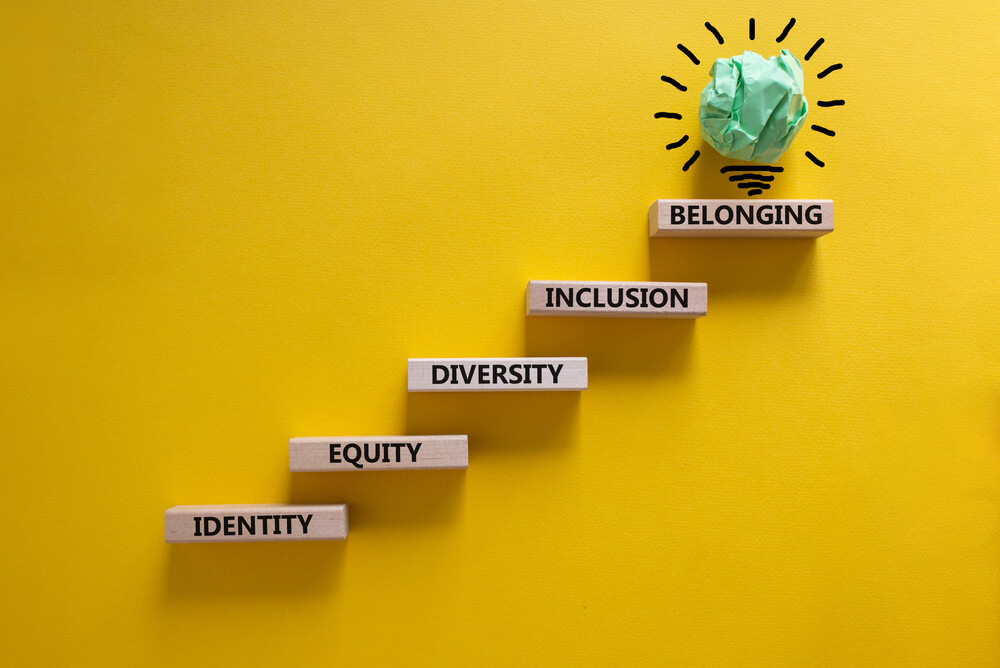The terms "diversity" and "inclusion" have become buzzwords, often used interchangeably, yet they represent distinct facets of a healthy workplace. Diversity refers to the representation of different identities within a collective group, while inclusion is about creating an environment where everyone has an equal opportunity to participate, contribute, and feel safe and respected.
Why does this difference matter?
Take, for example, a LinkedIn study that found that organizations in the top quartile for ethnic diversity have a +36% likelihood of financial outperformance. This statistic is often cited as a compelling reason for companies to diversify their workforce.
However, this statistic, while impressive, is also misleading. It suggests that adding diversity to a team will automatically increase profitability. The reality is far more complex. To truly reap the benefits of diversity, a company must also foster an inclusive environment.
Diversity and Inclusion: A Comparative Analysis
Diversity in the workplace is often lauded as a panacea for a multitude of organizational challenges. It's seen as a way to bring in fresh perspectives, foster creativity, and, by some accounts, even boost the bottom line. But what does diversity really entail? At its core, diversity is a mix of individuals from various backgrounds, races, genders, ages, or any other defining characteristics.
However, as the Harvard Business Review points out, there’s no empirical evidence that simply diversifying the workforce, without fundamental changes to the organizational culture, makes a company more profitable.
This is where inclusion comes into play.
Consider diversity and inclusion side by side. While diversity is like inviting people to a party, inclusion is asking them to dance. Having a diverse workforce is one thing, but it’s another to create an inclusive environment where people can be their authentic selves.
Inclusion is what allows the benefits of diversity to be fully realized. It’s about creating an environment where diverse perspectives are not just present but are also embraced.
Diversity is undoubtedly essential, but it’s not the endgame.
The Illusion of Diversity: Unpacking Misconceptions
Diversity has been hailed as a magic bullet for everything from team creativity to company profitability.
While a diverse workforce can bring a broader range of perspectives and ideas, it doesn't automatically lead to better performance or higher profits. A diverse team where members feel unheard or undervalued can be just as unproductive as a homogenous one.
Moreover, diversity without inclusion can lead to tokenism, where individuals are included in a group solely to give the appearance of variety. This can result in employees feeling like they're only valued for their differences rather than their skills or contributions. It's a situation that can breed resentment and disengagement, undermining any potential benefits of diversity.
So, is your business inclusive or just diverse?
If you aren’t sure, there are signs you can look for.
How to Gauge Your Company’s Inclusivity
Below are some indicators that your workplace is inclusive:
Representation at all levels. Having a diverse workforce is not enough; that diversity should be reflected in leadership roles and decision-making positions. This sends a clear message that the organization values diverse perspectives and experiences, and it's not just about ticking boxes.
Equitable opportunities for all employees, regardless of background, are another key indicator. This means that everyone has the same access to professional development, promotions, and other growth opportunities. It's about ensuring everyone has the tools and resources to succeed.
Respectful communication is the lifeblood of an inclusive workplace. This involves fostering an environment where everyone's ideas and opinions are valued and open and honest communication is encouraged. It's about creating a safe space to express their thoughts without fear of judgment or retaliation.

Inclusive policies and practices are also crucial. This could include flexible working arrangements, anti-discrimination policies, and diversity and inclusion training programs. These policies and procedures should be clearly communicated and consistently enforced.
A sense of belonging is perhaps one of the most important hallmarks of an inclusive workplace. Employees should feel valued and accepted for who they are and feel comfortable bringing their whole selves to work. This sense of belonging can lead to increased job satisfaction, higher levels of engagement, and a more positive workplace culture.
One company that has made significant strides in increasing inclusivity is Salesforce.
The tech giant has implemented a range of policies and practices to foster an inclusive environment, including establishing Employee Resource Groups (ERGs) for underrepresented groups, providing unconscious bias training for all employees, and regularly publishing comprehensive data on their workforce demographics. These initiatives have helped Salesforce create a culture where everyone feels valued and included.
If you’ve found that your company isn’t performing well on one or more of the above best practices, don’t fret.
There are a series of small steps that can help take your company from diversity to inclusivity. However, the efforts will fail without carefully planned roadmap.
From Diversity to Inclusion: A Strategic Roadmap
While major changes in the make-up of your managerial staff will eventually be needed to embrace inclusivity fully, there are smaller steps you can take in the meantime.
One of the first steps on this roadmap is diversifying the calendar. By acknowledging and reflecting on a variety of holidays and observances, companies can show respect for the diverse backgrounds of their employees. This can be further enhanced by offering flexible vacation days or unlimited PTO, allowing individuals to honor personally meaningful days.
Education is another crucial step on this roadmap. By making diversity and inclusion a consistent part of workplace conversations, companies can keep these concepts front of mind. This can be achieved through regular training sessions and by offering a budget for employees to explore different ideas that interest them in this area.
A shining example of this approach is Google.
The tech giant has made significant strides in promoting inclusivity by implementing comprehensive diversity and inclusion training programs. These programs are designed to educate employees about unconscious bias and to promote a culture of respect and understanding.
The roadmap should also include a review of company content. By educating teams on terms that may be offensive or exclusionary, organizations can ensure their communication is inclusive.
Creating spaces that celebrate diversity is another potential step. Employee resource groups, or ERGs, provide safe spaces for team members to connect and share experiences. These peer-led groups can foster a sense of belonging and acceptance among employees from diverse backgrounds.
Finally, companies can foster a culture where everyone feels valued and respected by showing interest in employees' personal lives and encouraging them to share their experiences.
In the journey from diversity to inclusion, it's important to remember that these steps are not one-time actions but ongoing commitments.
The Future of Workplace Inclusion
It's clear that diversity and inclusion are more than just buzzwords. They're integral to the fabric of successful organizations, shaping cultures that foster innovation, engagement, and growth.
But the journey doesn't end with understanding the importance of these concepts. It's about taking action, making changes, and continually striving to create a more inclusive environment.
One company that has made significant strides in this area is Accenture.
The global consulting firm has made a concerted effort to prioritize inclusion alongside diversity. They've implemented a number of strategies, including comprehensive training programs, transparent communication about diversity goals and progress, and a solid commitment to equal opportunities for all employees. Their efforts have paid off, with the company consistently ranking high on lists of the most inclusive companies worldwide.
But as we look to the future, it's clear that the work is far from over. The challenge for businesses is to understand the importance of inclusion and embed it into every aspect of their operations. It's about moving beyond diversity as a numbers game and instead focusing on creating a culture where everyone feels valued, heard, and empowered to contribute their unique perspectives and ideas.



